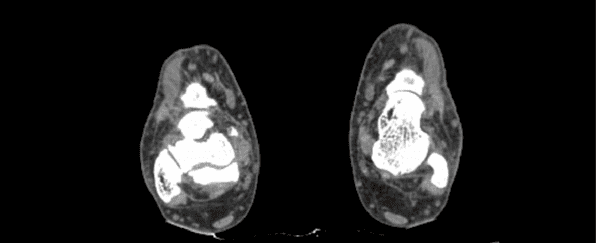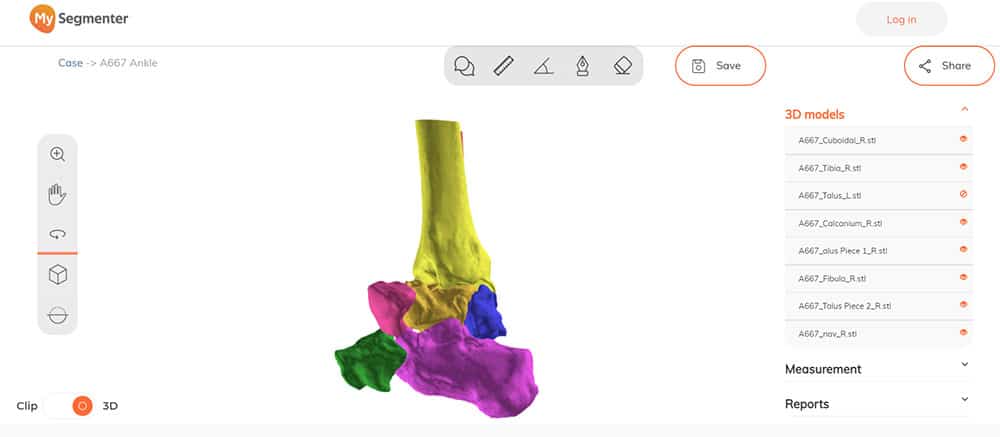3D printing has been hailed as a revolutionary technology, and it is already generating substantial interest among the medical community. One such medical 3D printing solution provider Jajal Medical provides customized orthopedic implants. The patient-specific designs and 3D printed models can be used to create prototypes, duplicate broken parts, and even entire organs.
Jajal Medical’s custom Talus spacer could be an ideal solution for trauma cases where the neighboring joint has substantial cartilage. As a design input, bilateral ankle CT was used for 3D talus creation. The healthy side talus was mirrored and registered on the damaged talus. Considering the size variations of the talus due to soft tissue balancing, pre-op planning design proposals consisted at least five sizes (Neutral, Upsize and Downsize).

Challenge:
Talus replacement could be used in conditions like osteonecrosis and trauma. Customized talus replacement is still a rarity in foot and ankle surgeries in India. A 47yr/M was diagnosed with fractured talus in the right leg. The patient was unable to sustain the mobility of his foot.
Dr. Rajiv Shah, Head of Foot and Ankle Surgeries, Sunshine Global Hospital, Vadodara approached Jajal Medical team to provide with the patient-specific solution of 3D printed Talus spacer. The team helped to visualize, plan, and then execute.
Solution:
Detailed preop planning played a pivotal role in the outcome of the surgery. Virtual session through a digital point of care 3D printing platform Mysegmenter.com helped Dr. Rajiv Shah understand the perception and intended use. Once the requirements were clear the complete plan was proposed to the surgeon.

Key steps involved –
- Contra-lateral talus was mirrored and registered with diseased talus using registration tools.
- Subsequently, we verified the conformity and location of registered talus with diseased neighboring bone. Fact that 70% of talus bone is involved in articulation, it is critical that the alignment of mirrored talus perfectly matches the articulating surface of all the adjacent bones, including tibia, navicular, calcaneus, and fibula.

- For accurate sizing prediction a 3D printed model with current position of adjacent bones was provided with existing talus gap. Five sizes -2, -1, 0 and +1, +2 were provided with as low as 10% volume difference to original.
- Range of sizes allowed surgeon to select appropriate one after intra-operative assessment of the joint.
- Considering the talus placement could be tedious and cumbersome when placed with hand during the surgery, detachable long handle was developed which was utilized for placing the talus trial and implant intraoperatively.

Outcome:
After the surgeon approval, final polished metal 3D printed talus implants were delivered non-sterile. Surgeon was happy with the customized implant quality and was able to achieve desired results with reduced intra-operative time, and faster recovery of the patient.
Subscribe to AM Chronicle Newsletter to stay connected: https://bit.ly/3fBZ1mP
Follow us on LinkedIn: https://bit.ly/3IjhrFq
Visit for more interesting content on additive manufacturing: https://amchronicle.com/

